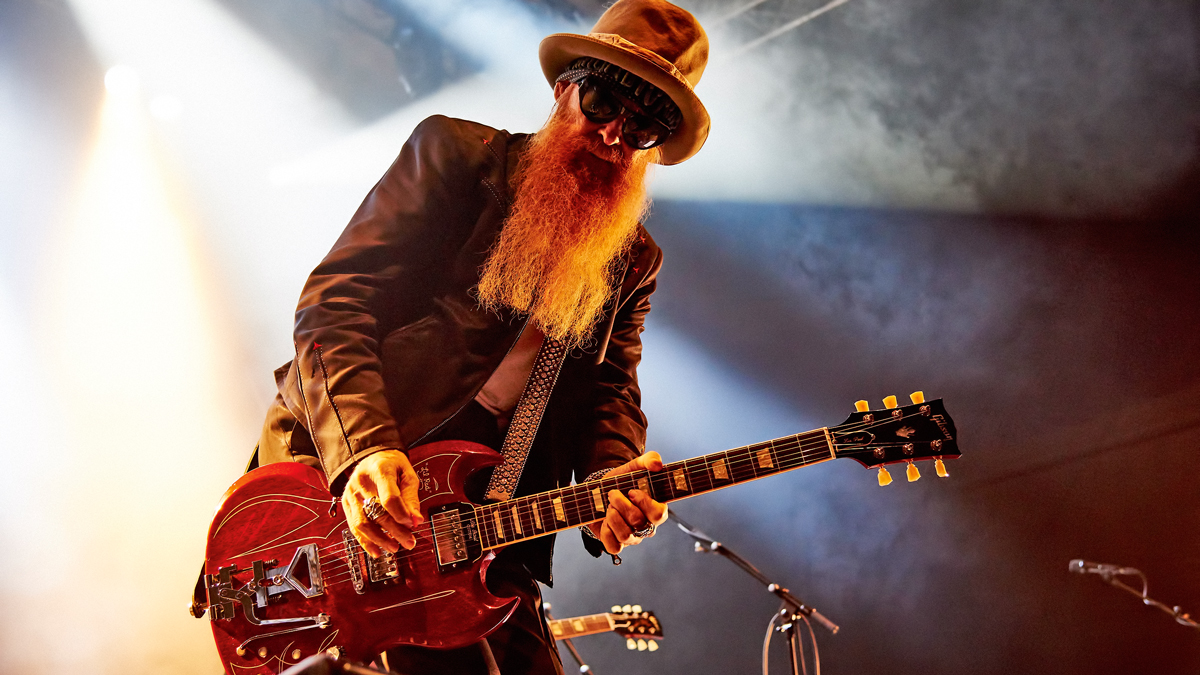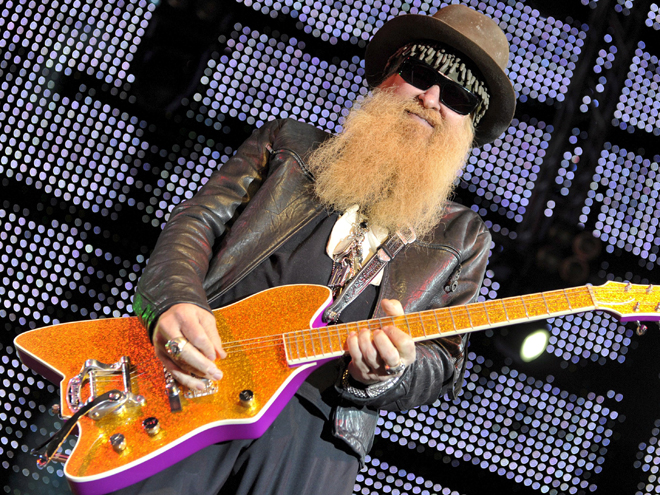Billy F Gibbons: 10 guitarists who blew my mind
ZZ Top's guitar legend names the blues players who changed his life

Spending time talking to Billy F. Gibbons about guitar is never a dull experience. The heavy-bearded blues hound formed ZZ Top at 20 years old, having spent the end of his teens opening on the Jimi Hendrix Experience’s first American headline tour with early band The Moving Sidewalks. The man has stories.
Now as an elder statesman for the blues, despite the multi-platinum record sales and long-cemented stature as one of rock ’n’ roll’s true legends, he’s held onto that same passion that brought him to the forefront of guitar music so many moon ago.
And it’s both evident and infectious from the moment the man sits down. He will play YouTube videos from his phone, howling with laughter as old masters - many of whom feature on his list of 10 guitarists below - twist the listener’s ear.
There’s a secret language to the blues - you need to say it without saying it!
When asked the secret to his success - being able to tell such vivid stories of sharp-dressed men and cheap sunglasses through the medium of strings on wood - you can bet your bottom dollar he’ll tell it like it is…
“I learned from the best,” grins Gibbons on his knack for musical truths. “There’s a secret language to the blues - you need to say it without saying it! There is a mystique in the poetry and in those simple three chords that have been stretched every which way. You take a song from my new record like Mo’ Slower Blues: it just has one chord that it never leaves! It just stays on the tonic. It doesn’t need to do anything else.”
Clearly, for this guitar legend, some things are better left unsaid…

“I was talking to my dear buddy Jimmie Vaughan, who recounted a tale where BB King showed up and had his guitar with him.
Get the MusicRadar Newsletter
Want all the hottest music and gear news, reviews, deals, features and more, direct to your inbox? Sign up here.
"Jimmie was over the moon, pointing at the spare amp on stage. He took his solo and turned it over to BB after which he said he 'woke up in a daze'.
"He didn’t think BB played more than two notes throughout the solo, but that’s all that was required. Sometimes those spare, skinny moments make the most sense.”
SPOILER ALERT: BB doesn't make this list, but scroll on to find out who is, including a real unknown at 10.
1. Van Wilks
“I call attention to a dear friend of mine and great, great guitar player from Austin, Mr Van Wilks. Early on, I discovered my fascination with his particular playing style. As we became pals, we started finding even more guitar-related common ground, for instance, Ida Presti. The young gal from France who became inspirational in ways that words cannot express.
“Listen to her version of Clair De Lune and you’ll know what I mean. She married another guitar player, between the work she was doing and what he did, those two brought the six-string Spanish guitar into another realm. So here we have a friendship with Van Wilks in Austin, Texas and together we’re discovering Ida’s work…”
2. Jimmie Vaughan
“Speaking of Austin, you’ve got Jimmie Vaughan, who simply has to be in this mix. Jimmie had a band out of Dallas, Texas called The Chessmen at the same time I was working in The Moving Sidewalks. The Chessmen were a five-piece band with Jimmie taking over the lead guitar spot, Doyle Bramhall Sr. was playing drums and singing with his remarkable voice, Bill Etheridge was on guitar and Tommy Carter on bass.
“I got an introduction with Jimmie way early; both of us were about 17 and had our own teen bands. Our friendship remains to this day. We’ll be playing together at the end of the year at The Jungle Show, which will be the fifth time we’ve done it. Sue Foley steps out of the shadows to bring her bluesiness, Mike Flanigin is playing B3, kicking bass pedals, and [Double Trouble’s] Chris Layton is on drums. That’s a nice outfit made out of friends I’ve made over the years right there in Austin, Texas.”
3. Jimmy Page
“Then there’s the collection of great guitar players from Britain. Keith Richards, Jeff Beck, Jimmy Page, Mick Taylor, Peter Green, Mick Abraham. I’d call all of this the British block in my list.
“Jimmy Page is one of the greatest. I would invite all of you readers to go check out the nightclub scene from the 1966 movie Blowup, where The Yardbirds are playing. They had Jeff Beck and Jimmy Page at the same time! Listening to the band doing Train Kept A-Rollin’… it’s just ferocious. Both of those guys had tone for days.”
4. Jeff Beck
“Speaking of Jeff, he’s someone that has taken the divebomb into such an elegant and very delicate presentation. I became fascinated with his mastery of playing without a pick.
“One time someone quizzed him on it and he said, ‘Oh yeah, once I saw Hubert Sumlin, who never used a pick, and felt I had to chase that one!’ Which leads me to my next choice…”
5. Hubert Sumlin
“Hubert was a very interesting player. The lucky charm of all these people is the legacy that their recordings have left. They’ve allowed us to keep studying these technicians, most of which had the good fortune to make records which allows us to close our eyes today, thinking about what the music means and almost place ourselves in the studio watching it all go down.
“And it’s repeatable! A live performance is wonderful, but it tends to evaporate. It’s there and it’s gone. The product of repeatability really allows us to find a solid ground in music, going back and back and back.
“Just while we’re on blues and for variety’s sake, as well as to leave the readers scratching their heads, there was another guy I’d like to mention from the early Muddy Waters recordings called Little Walter. He was best-known for his harmonica playing but he also played guitar - he’s actually on there playing with Muddy on some of those tracks.”
6. Eric Johnson
“Eric is an absolutely terrifying player. He has a great tone that he once called his own attempt to become a 100-pound violin… which I think is brilliant. I remember reading that and absolutely loving the idea behind it.
“He has this warm sound that comes from multiple amps, delays and reverbs. I would definitely say he’s someone who has tamed the twang of his Strat - there’s not as much high-end in there. He’s a very schooled player; there’s a lot to be learned from him.”
7. Andrés Segovia
“There’s another world of guitar playing to explore here. It would be fair to shed light on some of the accomplishments that Andrés Segovia’s hands would bring forward. By illuminating Segovia, there’s obviously another must-have individual in Django Reinhardt that springs to mind…
“Actually, there’s a legion of more classical-based technique found in players from Brazil. You have Antônio Carlos Jobim, who was from Rio de Janeiro, born in 1927. He wrote One Note Samba; look it up on online… it’s incredible. That approach to music really is in a world of its own; it’s so different to something like the blues. I’m sure glad I don’t have to pick who is number one out of these guys!”
8. Paul Size
“This next block I’d like to give to the guitar players from a band called The Red Devils. Paul ‘The Kid’ Size on guitar, he had this real angry Strat, Stevie Ray Vaughan kind of tone. He would do this thing where he’d play a blues lick at speed and then all of sudden quicken the pace before anyone could see it coming.
“Then there was Dave Lee Bartel, a wonderful rhythm player, and Mike Flanigin who despite being known for the Hammond, started off as a guitarist! A lot of people have underrated his guitar work because he’s become so accomplished on the Hammond B3. That’s the sound of Texas meeting California.
“While we’re on California, Hollywood Fats was a guy from Los Angeles who played with James Harman, a harmonica player. Unfortunately he died way too early. But he was part of this gang of guys who were very much like-minded in both their thinking and their playing.”
9. Jimi Hendrix
“For my list, Jimi Hendrix needs to be on there without question. That man was doing things with the Fender guitar that I can guarantee the designers never dreamed would be done to their instrument. It was all him who did it.
“He took that thing and made it his own. He was the first to discover that the three-way toggle was actually five. Instead of just the back, middle and front, he learned about the in-between sounds. He took the pickguard off, removed the springs so the toggle was free-floating, carefully placing it in all the sweet spots. It was a happy accident that the toggle-switch connectors could work that way.”
10. You?
“I think I’m going to fill out nine and leave the 10th space blank. Why? Because I know someone will come along next week and blow our minds that is yet to be named. They will show up and rewrite the rulebook… could this be you?”
Amit has been writing for titles like Total Guitar, MusicRadar and Guitar World for over a decade and counts Richie Kotzen, Guthrie Govan and Jeff Beck among his primary influences. He's interviewed everyone from Ozzy Osbourne and Lemmy to Slash and Jimmy Page, and once even traded solos with a member of Slayer on a track released internationally. As a session guitarist, he's played alongside members of Judas Priest and Uriah Heep in London ensemble Metalworks, as well as handling lead guitars for legends like Glen Matlock (Sex Pistols, The Faces) and Stu Hamm (Steve Vai, Joe Satriani, G3).










